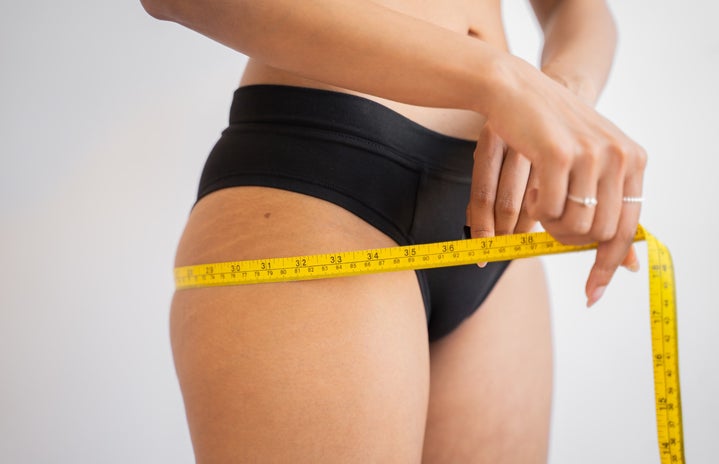In about 2012, the Body Positivity Movement took the world by storm. It was a new, wonderful, and accepting movement that claimed: “all bodies are beautiful bodies”. It placed emphasis on the idea that everyone should love their body, and that regardless of size, everyone must be happy with their bodies and absolutely own it. However, in recent years, the toxicity of the Body Positivity Movement has come to light, deterring many from the movement. This has led to the popularisation of the Body Neutrality Movement: a movement emphasizing gratitude for one’s body and all it does.
I’m sure many of you are aware of the Body Positivity Movement, and all the “success” it’s achieved in expanding beauty ideals and acceptance of all shapes and sizes. Initially, the movement started as the Fat Rights Movement, which admittedly was mostly aimed at white communities accepting white fat people. It then moved to the Body Positivity Movement when it became inclusive of all races and genders. It was aimed at encouraging everyone to accept their bodies, regardless of their flaws, and to love their bodies, regardless of their flaws. According to this movement, every shape, size, scar, and deformity was to be loved. And it worked. For a very long time, marginalised groups felt empowered by having a voice, and were permitted to feel comfortable in their bodies after lifetimes of being told to hate and hide it. However, with the popularisation of the movement on social media such as Instagram and Tiktok, the “Body Positivity” Movement didn’t seem so positive anymore.
Through social media platforms, everyone was now sharing pictures and videos of their “flaws” to show that it was okay to have these “flaws” and that they loved their bodies despite these “flaws”. However, it brought forward a very interesting point. In people attempting to be “body positive” by accepting their flaws – such as their stomach rolls, their cellulite, stretch marks, and so forth – they were actively associating these with negative connotations. By claiming these features as flaws, people are further instilling, though perhaps not very consciously, the idea that these features are an error or mistake in their bodies.
On top of this, the Body Positivity Movement emphasizes unconditional love for your body. According to this movement, you must always love your body. As I’m sure many of you have experienced, this is close to impossible. The movement, however, doesn’t really make space for unhappiness about your body, because “all bodies are beautiful bodies”. This then creates a general toxic positivity which can be detrimental to the whole concept of accepting and loving your body. The movement puts emphasis on physical features, the appearance, of the body. This, problematically, fosters associations with “attractiveness” instead of the body’s functionality. A warped idea emerges from this: a person may believe that they are supposed to love their body and find it physically appealing. But they don’t find their current physical state attractive. They instead find a different body type and size more attractive and easier to love. Therefore, to love their body, they feel that they must become that other body type and size. The problem with this is that it has the potential to spiral into body dysmorphia and eating disorders because people want a body that matches the ideal body that they (or society) have deemed desirable.
Another feature of the Body Positivity Movement that may not be so positive is the idea of tokenism. Tokenism refers to making a very minimal effort at doing something and using a small number of people with certain features to achieve this. Tokenism and Body Positivity Movement are related through the point of emphasis on physical appearance and attractiveness. Brands tried to show support of the Body Positive Movement by introducing a small circle of models (for example) that show this inclusivity. What occurs in this tokenism, is that the same bodies, for example, are used in all the “inclusivity” marketing, and many brands make use of, for example, a woman who only just makes the plus-size cut. This then adds to the idea that to be positive about your body, you need to fit that specific size or shape.
Now, I’m not saying that the Body Positivity Movement is all bad and should be completely dismissed. If the movement works for you and your body, then that’s all that matters. However, for those of you who don’t appreciate the movement’s focus on appearance and constantly loving your appearance, the Body Neutrality Movement may be a better fit for you.
The Body Neutrality Movement was introduced in 2015 in response to the popularisation of diet culture and diet-culture promotion, by Anne Poirier, who called out celebrities such as the Kardashians for promoting diet-culture. The Body Neutrality Movement centres on an appreciation for what your body does, rather than how it looks. The Body Neutrality Movement allows for people to admit and accept that they are not always happy with their bodies, but that that is okay because it is not one’s appearance that truly matters.
The Body Neutrality Movement wins over a lot of people by encouraging the idea that we don’t actually have to consider or think about our bodies in terms of physical appearance. This helps devalue physical appearance, and thus “attractiveness”, which allows people to change their mindsets and goals regarding their bodies. This movement emphasizes gratitude towards your body for everything it does, which shifts people’s focus to ensure their bodies are healthy and well-maintained rather than being physically appealing. Furthermore, the Body Neutrality Movement makes it easier for people to accept their bodies even when it changes, which helps prevent a hyper-focus on trying to make your body look a certain way. This also leads to less emphasis on “ideal” body types, as people are no longer aiming to achieve certain societal standards, but rather wanting to maintain their overall health.
An important feature of Body Neutrality is that it doesn’t force the individual to warp their perception and views of their own bodies so that they can show just how much they love them. For example, let’s look at stretch marks. I’m sure that in our current society everyone is well aware of what they are. The Body Positive Movement produced the idea of them being “tiger stripes”, leading to a multitude of pictures of stretch marks filled in with glitter to encourage love and acceptance of them. However, not everyone regards their stretch marks as something beautiful and positive. They’re pushed into this false positivity that doesn’t resonate with them and often makes them dislike their stretch marks even more. The Body Neutrality Movement, however, allows for the space to shift between liking, disliking, or not even taking note of stretch marks. Essentially, with the Body Neutrality Movement, there’s no need to force yourself into making every part of your body something you are permanently happy with.
Admittedly, body neutrality is not an easy thing to achieve, especially considering we’ve been exposed to Body Positivity for such a long time. However, there are some small steps you can take towards achieving body neutrality. The movement encourages a lack of – or diminished amount of – body-related talk in conversations, as this aids you in separating your body from who you are as a person. By slowly removing references to your body (or any body) in conversations, you’re able to remove the value you perceived it to have in defining you. You may also want to reflect on the thoughts you have about your own body (easier said than done, I know) so you can notice where you place your worth and what you are most judgemental of. From here, you’ll want to work through these thoughts and perceptions you have about your own body, allowing yourself to accept them and understand that they add no value to your worth as a person. Remember to show gratitude towards your body. For those who enjoy journaling, you may want to write down what exactly your body is doing for you that you’re grateful for. This may help especially on the body parts that you place the most judgement on. It’s important to shift your focus from appearance to how your body is keeping you alive. You may also want to re-evaluate your social media in terms of who you follow, and how the content you receive influences your view of yourself. Social media, as I’m sure many of us have gathered, has an insane hold over society and our own views, and easily results in us looking poorly at ourselves. Take the time to make sure the content you view is content that will make you happy.
Ultimately, there is really no right or wrong way to go about accepting your body. If positive affirmations and permanent self-love, even if it has to be a fake-it-till-you-make-it situation, works for you, then the Body Positivity will get you where you want to be. If you prefer to look away from physical appearance and rather focus on what your body does for you, then the Body Neutrality Movement may be a better fit. What is important here is that you find ways to accept your body, appreciate your body, love your body, and empower your body in any way you are comfortable with.


